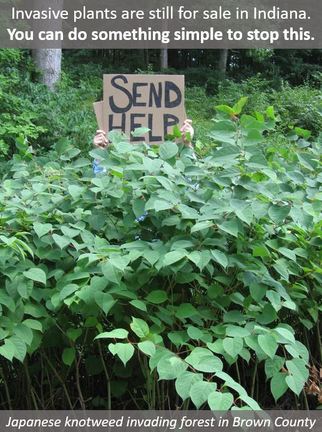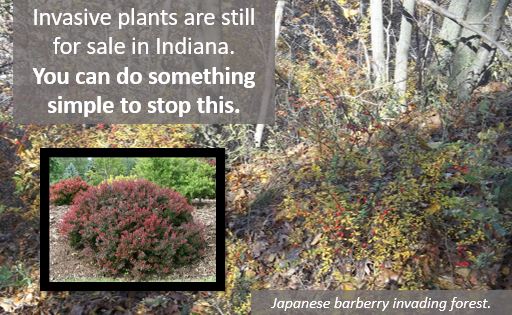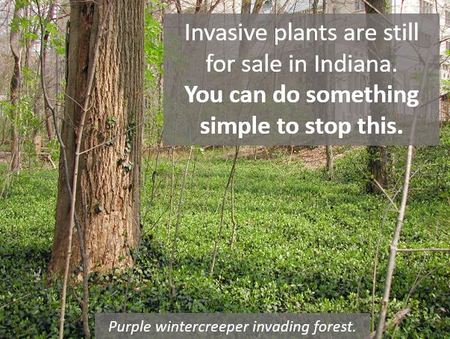Invasive plants are still for sale in Indiana. Do something simple to stop this.
Invasive plants are still for sale in Indiana, and you can do something simple to help stop this. We’re spending millions of dollars to control invasive plants in Indiana every year, but most of those invasive plants are still for sale at your local garden shop. Good news – the DNR has drafted a rule that would make it illegal to sell all the highly invasive plants in Indiana! Bad news – that rule is now stuck in the Office of Management and Budget (OMB). Want to suggest to Governor Holcomb that this rule should move forward? Here’s how you can do that in just a few minutes!
Let the Governor know you want the sale of invasive plants to stop.
|
|
Some good reasons to add:
|
Invasive Plants Covered by This Rule:
• Carduus acanthoides ( spiny plumeless thistle).
• Phellodendron amurense (Amur cork tree). • Polygonum perfoliatum (mile-a-minute vine). • Vincetoxicum nigrum (black swallow-wort). • Vincetoxicum rossicum (pale swallow-wort). • Achyranthes japonica (Japanese chaff flower). • Ailanthus altissima (tree of heaven). • Alliaria petiolata (garlic mustard). • Alnus glutinosa (black alder). • Artemisia vulgaris (mugwort). • Arthraxon hispidus (small carpgrass). • Berberis thunbergii (Japanese barberry). • Carduus nutans (musk thistle). • Celastrus orbiculatus (Asian bittersweet). • Centaurea stoebe (spotted knapweed). • Cirsium vulgare (bull thistle). • Conium maculatum (poison hemlock). • Convolvulus arvensis (field bindweed). • Coronilla varia (crown vetch). • Dioscorea polystachya (oppositifolia) (Chinese yam). • Dipsacus fullonum (common teasel). • Dipsacus laciniatus (cut-leaved teasel). • Elaeagnus umbellata (autumn olive). • Euonymus fortunei (wintercreeper). • Euphorbia esula (leafy spurge). • Frangula alnus (glossy buckthorn). • Humulus japonicus (Japanese hops). • Hesperis matronalis (dame’s rocket). • Lespedeza cuneata (sericea lespedeza). • Lepidium latifolium (pepperweed). • Ligustrum obtusifolium (blunt leaved privet). • Lonicera japonica (Japanese honeysuckle). • Lonicera maacki (Amur honeysuckle). • Lonicera morrowii (Morrow’s honeysuckle). • Lonicera tatarica (Tatarian honeysuckle). • Lonicera x bella (Bell’s honeysuckle). • Microstegium vimineum (Japanese stiltgrass). • Morus alba (white mulberry). • Phalaris arundinacea (reed canarygrass). • Phragmites australis subspecies australis (common reed). • Reynoutria japonica (Japanese knotweed). • Reynoutria sachalinensis (giant knotweed). • Reynoutria x bohemica (Bohemian knotweed). • Rhamnus cathartica (common buckthorn). |


